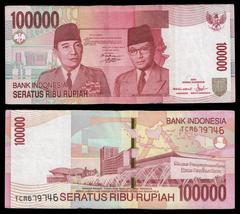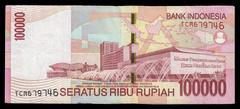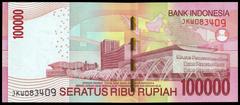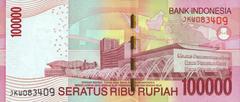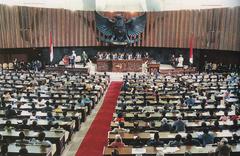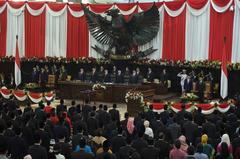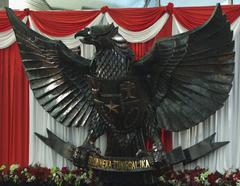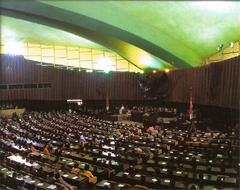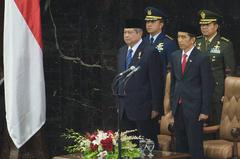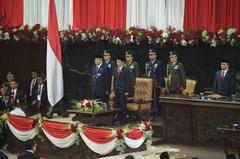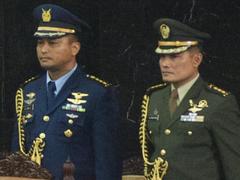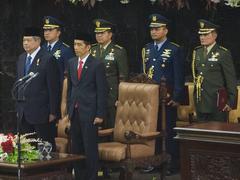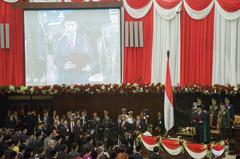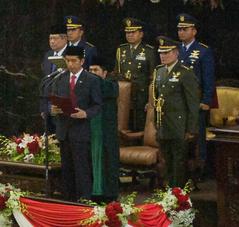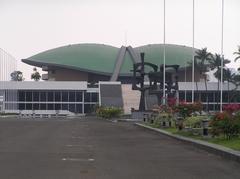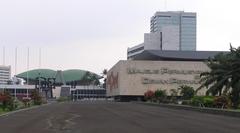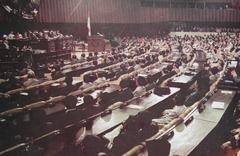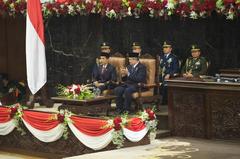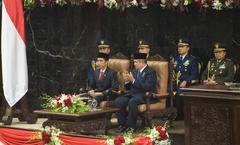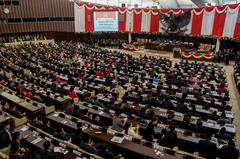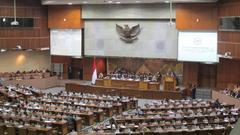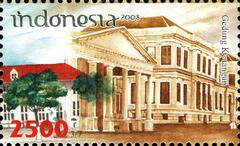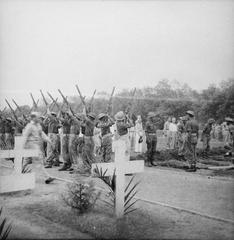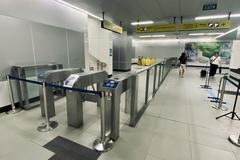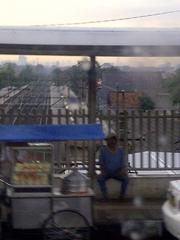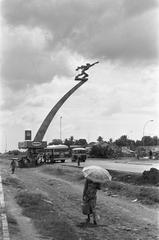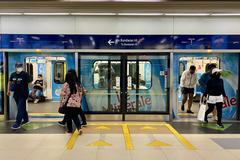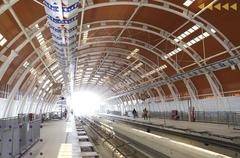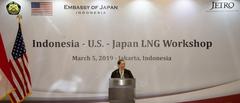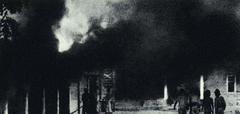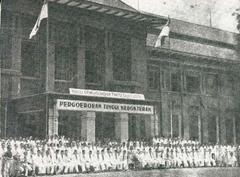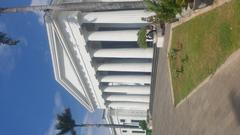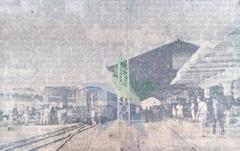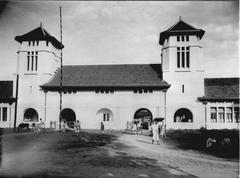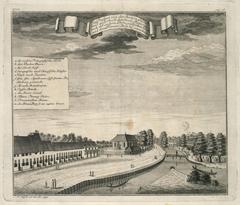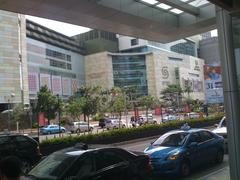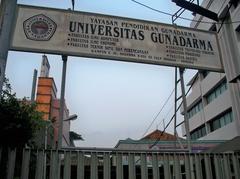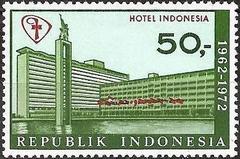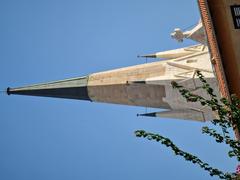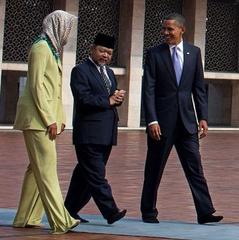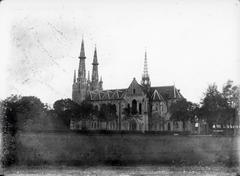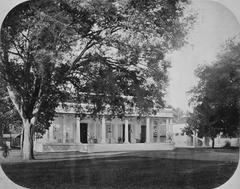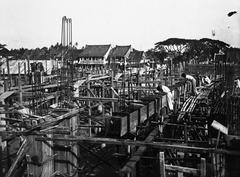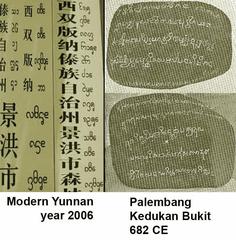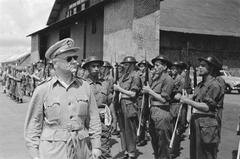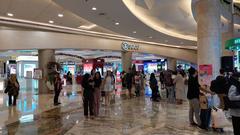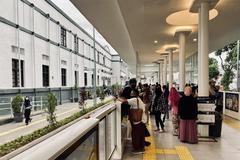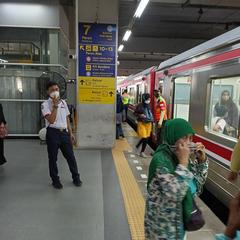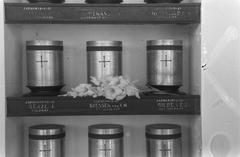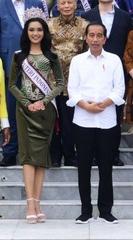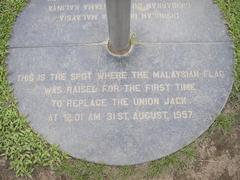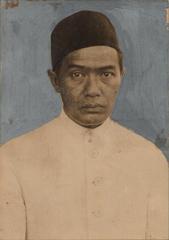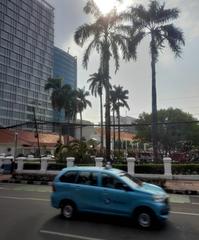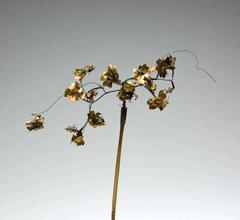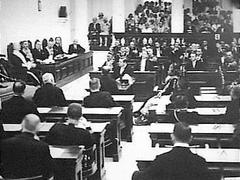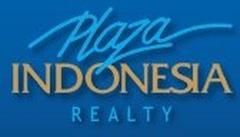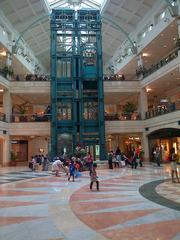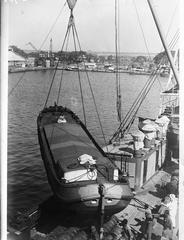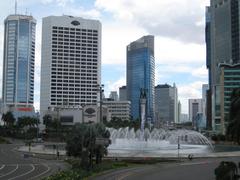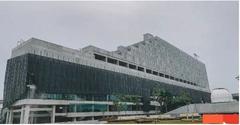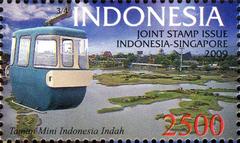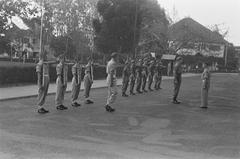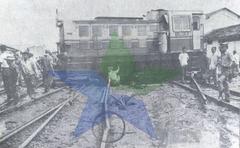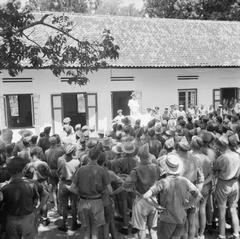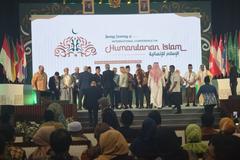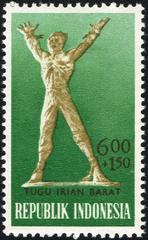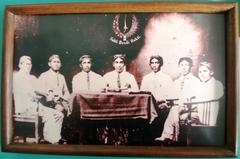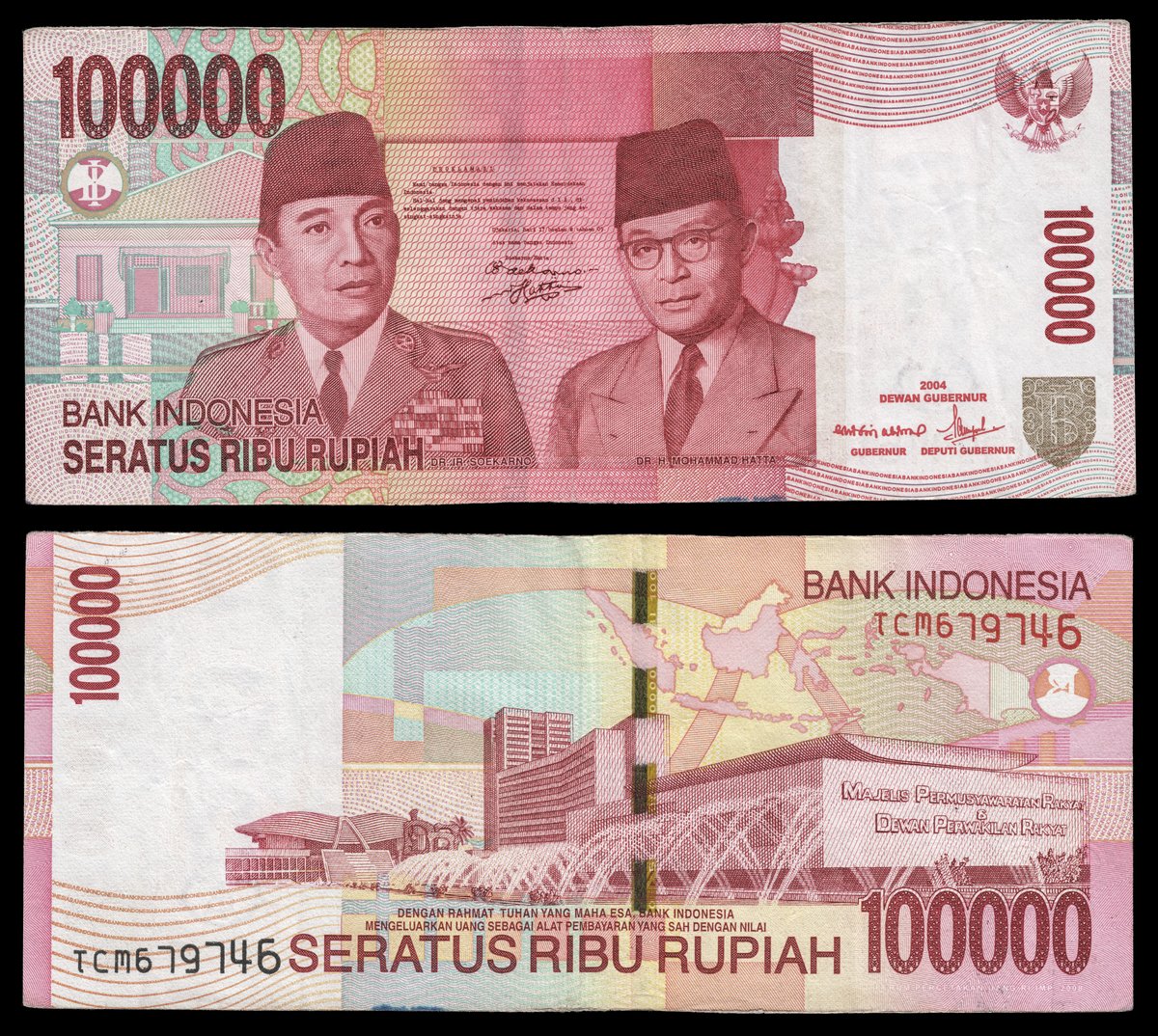
DPR/MPR Building Jakarta: Visiting Hours, Tickets, and Historical Guide
Date: 14/06/2025
Introduction: The Significance of the DPR/MPR Building
The DPR/MPR Building, officially known as Kompleks Parlemen Republik Indonesia, stands as an enduring icon of Indonesia’s political, architectural, and cultural evolution. Located in the heart of Jakarta’s Senayan district, this complex is more than the seat of the national legislature—it is a living testament to Indonesia’s journey from colonial rule through independence, periods of authoritarianism, and the flourishing of democracy. Its architectural centerpiece, the Gedung Nusantara, is instantly recognizable thanks to its sweeping green dome, evocative of the Garuda’s wings—Indonesia’s national emblem.
Originally conceived in the mid-1960s to host the Conference of New Emerging Forces (CONEFO), the complex was repurposed in the early 1970s as the home of Indonesia’s legislative bodies. Designed by renowned architect Soejoedi Wirjoatmodjo, the DPR/MPR Building fuses modernist principles with powerful national symbolism, reflecting the country’s aspirations for unity and progress (Setiap Gedung Punya Cerita, Detik).
Today, the DPR/MPR Building welcomes visitors eager to learn about Indonesia’s legislative process, architectural heritage, and cultural identity. Its proximity to other major Jakarta landmarks, like Monas and the National Museum, makes it a must-visit for anyone keen to explore the city’s historical canvas (Good News From Indonesia, Wikipedia).
Contents
- Introduction
- Historical Background
- Architectural Design and Symbolism
- Layout and Key Structures
- Political and Cultural Importance
- Visiting Information
- Hours and Admission
- Ticketing and Security
- Accessibility
- Travel Tips
- Nearby Attractions
- Facilities and Amenities
- Frequently Asked Questions (FAQ)
- Visuals and Media
- Additional Resources and Links
- Summary and Call to Action
Historical Background
The legislative roots in Indonesia date back to the Volksraad in 1918, progressing through the Central Indonesian National Committee (KNIP) and the federal period post-independence. By the 1960s, temporary venues housed the legislature, until the construction of the current DPR/MPR complex began in 1965. After the political shift from Sukarno to Suharto, the site’s function pivoted from a global conference venue (CONEFO headquarters) to Indonesia’s legislative center by 1972 (Setiap Gedung Punya Cerita).
Architectural Design and Symbolism
Modernist Roots and Garuda-Inspired Dome
The complex’s design, led by Soejoedi Wirjoatmodjo, reflects modernist ideals—clean lines, open spaces, and functional forms—while weaving in national motifs. Most notable is the Gedung Nusantara’s dome, shaped to evoke the Garuda’s wings, symbolizing Indonesia’s unity and dynamism (Everything Explained Today). The use of reinforced concrete, steel, and glass exemplifies the era’s architectural ambitions, and the layout’s grand approach roads and gardens reinforce the authority and gravitas of the nation’s legislature (Detik).
Layout and Key Structures
The 60-hectare complex includes several interconnected buildings (Good News From Indonesia):
- Nusantara Building (Main Plenary Hall): The legislative heart, featuring the iconic Garuda dome and seating for 1,700.
- Nusantara I: A 24-story office tower for parliament members.
- Nusantara II–V: Meeting halls, offices, and event spaces.
- Secretariat General Building: Administrative hub.
- Baiturrahman Mosque: Serving the spiritual needs of the community.
- Central Courtyard: Features the “Electronics Element” sculpture and flagpoles representing Indonesia’s provinces (Detik).
The interiors are designed for inclusivity and efficiency, with tiered seating, modern AV systems, and adaptable spaces for evolving legislative needs.
Political and Cultural Importance
Center of Legislative Power
The DPR/MPR complex is home to:
- DPR: The People’s Representative Council, Indonesia’s main legislative body.
- MPR: The People’s Consultative Assembly, responsible for constitutional amendments and inaugurations.
- DPD: The Regional Representative Council, representing provincial interests (Facts and Details).
Historic moments, including the 1998 student protests that led to Suharto’s resignation, have unfolded here, cementing the building’s status as a symbol of reform and democracy (Setiap Gedung Punya Cerita).
Cultural Significance
The building’s Garuda-inspired dome, indigenous materials, and integration of traditional motifs reflect Indonesia’s identity and unity. Public art, such as the “Batu-Batu Pembangunan” relief and lush gardens, add aesthetic and cultural depth. The site is prominent during Independence Day and other national events.
Visiting Information
Location and Getting There
- Address: Jalan Gatot Subroto, Gelora, Tanah Abang, Central Jakarta
- Nearby: Gelora Bung Karno Sports Complex, Senayan Park, National Monument (Monas)
- Transport: Palmerah Station (KRL Commuter Line), TransJakarta buses, taxis, and ride-hailing apps (Wikipedia)
Visiting Hours
- Monday–Friday: 9:00 AM–4:00 PM
- Closed: Weekends and public holidays
- Note: Mornings are less crowded; check for event closures (Disway)
Admission and Ticketing
- Entry Fee: Free
- Access: By guided tour (book at least two weeks in advance via the Secretariat General)
- ID Required: KTP (Indonesians) or passport (foreigners)
- Security: Bag checks and screening are mandatory
Dress Code and Conduct
- Dress conservatively: collared shirts and long trousers for men, modest attire for women
- Respectful behavior required
- Photography is restricted in certain zones—always ask permission
Accessibility
- Ramps, elevators, and accessible restrooms throughout the complex
- Assistance available at the visitor center
Facilities and Amenities
- Clean restrooms
- Mosque/prayer room (Baiturrahman)
- Limited cafeteria options; more food choices in adjacent districts
- Signage mainly in Indonesian—translation apps or guides recommended
Practical Tips
- Book tours early and carry valid ID
- Plan for Jakarta’s traffic and limited parking
- Stay hydrated; bring bottled water
- Download essential apps (Grab, Gojek, Google Maps)
- Follow official updates for special events or closures
Nearby Attractions
- Gelora Bung Karno Sports Complex
- Senayan City Mall
- National Museum of Indonesia
- Istiqlal Mosque and Jakarta Cathedral
Special Events: Mudik Gratis
During the annual “Mudik Gratis” (Free Homecoming) event, the DPR/MPR complex serves as a gathering point. Expect larger crowds and enhanced security; tours may be suspended during these times (Disway).
Frequently Asked Questions (FAQ)
Q: Can I visit without an appointment?
A: No. Guided tours or special event access must be arranged in advance.
Q: Are there entrance fees?
A: No, but an appointment is required.
Q: Is the building accessible for people with disabilities?
A: Yes, with ramps and lifts throughout.
Q: Can I take photographs?
A: Permitted in most outdoor/public areas; restricted indoors.
Q: What ID is needed for entry?
A: KTP (Indonesians) or passport (foreigners).
Visuals and Media
Explore virtual tours, interactive maps, and photo galleries on the official DPR/MPR website. Capture the Garuda dome and central courtyard sculpture for memorable photos.
Additional Resources and Links
- Setiap Gedung Punya Cerita
- Detik – Arsitek & Sejarah Gedung DPR
- Good News From Indonesia
- Wikipedia – MPR/DPR/DPD Building
- Facts and Details
- Disway – Mudik Gratis
Summary
The DPR/MPR Building is not only the seat of Indonesia’s legislature but also a powerful emblem of national unity, resilience, and progress. Its innovative architecture, rich political history, and ongoing role in Indonesia’s civic life make it a compelling destination for visitors. With free public access by arrangement, robust accessibility features, and its location near Jakarta’s top historical sites, it offers a rewarding and educational experience for tourists, students, and locals alike.
Plan your visit by arranging a guided tour, following recommended protocols, and leveraging online resources for a smooth and meaningful experience. For up-to-date information on visiting hours, events, and travel tips, refer to the official channels and consider downloading the Audiala app.
